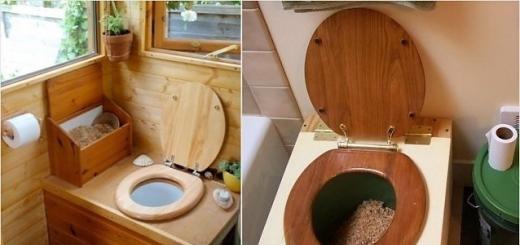 we have considered the general concept of a houseboat. Now we will consider its device. This house must be made environmentally friendly and made so that it does not sink. A houseboat, like a land-based house, must have a foundation. The foundation of our house is made of metal. We manufacture a pontoon and, as on all pontoons, we make bevels for easy movement through the water. Water filters can be installed inside the pontoon, thanks to which you can consume water for domestic needs. It is also possible to make a sewage treatment plant inside the pontoon so as not to litter the environment. To periodically check such equipment, we need to make a hatch, since we will need to get there periodically to change the filters. The height of the pontoon is calculated depending on the structure and the load on it. That is, if you wanted a one-story house made of lightweight materials, then a pontoon can be made up to one meter high. If you want a high house with a variety of amenities, then the pontoon must be made up to 1.5 meters. Next, on top of the pontoon, we weld a channel on the edge along the perimeter, or a powerful corner, to assemble the lower frame of the house. After we have completed the installation of the channel or corner, we paint the pontoon with paints with rust protection. The next step is to assemble the frame around the perimeter from a 200x100 bar (fixing it with bolts to a channel or corner), which will also serve for the floor. The beam must be treated with antifungal drugs and further proliferated.
we have considered the general concept of a houseboat. Now we will consider its device. This house must be made environmentally friendly and made so that it does not sink. A houseboat, like a land-based house, must have a foundation. The foundation of our house is made of metal. We manufacture a pontoon and, as on all pontoons, we make bevels for easy movement through the water. Water filters can be installed inside the pontoon, thanks to which you can consume water for domestic needs. It is also possible to make a sewage treatment plant inside the pontoon so as not to litter the environment. To periodically check such equipment, we need to make a hatch, since we will need to get there periodically to change the filters. The height of the pontoon is calculated depending on the structure and the load on it. That is, if you wanted a one-story house made of lightweight materials, then a pontoon can be made up to one meter high. If you want a high house with a variety of amenities, then the pontoon must be made up to 1.5 meters. Next, on top of the pontoon, we weld a channel on the edge along the perimeter, or a powerful corner, to assemble the lower frame of the house. After we have completed the installation of the channel or corner, we paint the pontoon with paints with rust protection. The next step is to assemble the frame around the perimeter from a 200x100 bar (fixing it with bolts to a channel or corner), which will also serve for the floor. The beam must be treated with antifungal drugs and further proliferated.
After collecting the frame, you can begin to assemble the whole house. Such a house, as well as on land, can be assembled as a panel and timber house.
To provide the house with electricity, it is necessary to use a wind farm of the typeEuroWind-2. Using a wind farm will save your holiday from the noise that, say, a diesel generator creates.
To go ashore, a ladder is used, which is connected by hinges and attached to the pontoon. The swivel joint is necessary so that when transporting the house to the place of the reservoir and along the water itself, it can be lifted vertically with a winch. Gas equipment is best placed in the same way as the treatment plant inside the pontoon, thereby protecting yourself from an unwanted explosion, and not taking up extra space at home.
Windows are best used with the opening of the shutters up to the street. In such a situation, the sashes will not interfere and you can use the internal territory of the house to the maximum. The convenience of the location of the shutters also lies in the fact that in rainy weather you do not have to close the windows, since drops will not fall into your house.
If you want the house to have a recreation area where you can sunbathe, barbecue or just relax, then simply increase the length of the pontoon when planning, to fit the size of the future site or veranda.






Choosing a project to build your own home, whether it's a permanent home or a summer cottage, has never been an easy task. The explanation for this may be the need to achieve an optimal compromise between opportunities (financial, land, time, etc.) and desires (its unusualness, exclusivity, convenience, practicality, comfort).
It would seem that all the options have already been sorted out, but no solution has been found - the very zest is missing. Then, perhaps, if there is a reservoir nearby, you can pay attention to houseboats.

Such an unusual dwelling is not new, and has been known around the world for many years. In Europe and the USA, houseboat projects have long been widely in demand, not only as suburban housing or unusual original hotels and boarding houses on rivers and lakes, but also as permanent urban housing. in such cases, perhaps, it can find the widest and most justified application as a finishing material, because it is 100% resistant to high humidity and direct contact with water.

In fact, a houseboat, which is also called a houseboat, is not a ship or a yacht, although there are many designs that are equipped with an engine to move. Such a dwelling is built mainly on various pontoons (each time one or another option is calculated individually), which give the house stability and exclude pitching, like on a yacht.


If you type “houseboat photo” in the search engine, you can pay attention to the fact that the dwelling has all the necessary benefits:
- electricity (moreover, the house can be connected both to a fixed network on land, and have an autonomous system of solar panels and batteries, power generators, etc.);
- water (water supply can also be supplied centrally from land, or storage tanks can be provided);
- sewerage (usually storage tanks that need to be emptied and disinfected from time to time).

Projects of floating houses also provide for a heating system. A well-thought-out and correctly calculated option allows you to use the houseboat all year round for permanent residence, while providing a person no less comfort than an ordinary house. It could be:
- a stove with a firebox, like a fireplace stove or potbelly stove, often with a double circuit that allows you to heat your home and cook food;
- solid fuel boiler with radiator system;
- the underfloor heating system is usually electric, although water options are also possible.
Much attention is paid to the system of noise and heat insulation.

houseboat photo
Houseboats can have completely different designs, for example, stylized as a ship, yacht, ferry, or may not actually differ from an ordinary traditional house. Styles can be very different: hi-tech, modern, country, etc.

As finishing materials, you can also use any, up to decorative brick and stone. For finishing the "courtyard" wood is best suited - special rare and expensive naturally oily species or decking.
The internal layout can also be different, you can find two, and even three-story houseboats, but, as a rule, these are quite economical and small dwellings, which also allow you to save on land tax.
Perhaps the only thing that will need to be taken care of is that your home cannot be towed somewhere in your absence, unless, of course, you build such a house on a small closed lake.

Look for images and projects on the topic “houseboat photo” on the site “House projects”. Also here you can always consult with a specialist in a particular issue.
Almost all people, with a few exceptions of adherents of the urban lifestyle, tend to reach out to nature. Therefore, everyone, to the best of his ability, tries to achieve this in one way or another. Someone leaves the city, more wealthy people travel to exotic countries, less - explore the picturesque corners of the fatherland. And someone is attracted by a floating cottage, located on a small reservoir a few hours drive from the city.
Dacha on the water
What to do if there is no way to acquire at least a piece of land? In such cases, and, of course, due to an irresistible desire to relax in this way, just the option of arranging a residential building directly above the water surface is suitable for you. The history of water houses dates back a century, and the geography is interesting and varied.
A small digression into history
More than a hundred years ago, during the period when India was an English colony, it was the British who began the construction of floating houses on the Indian lake Dal. The Maharajah of the capital of the Indian state of Kashmir, the city of Srinagar, moved them to this by banning the sale of land for the construction of houses to foreigners.
Resourceful lovers of recreation in these beautiful places began to build houses on the water.
And now Dal Lake boasts not only floating cottages, but also:
- Shops.
- Palaces.
- Temples.
- Hotels.
- Mansions.
Houses on the water are very popular in many other countries, for example, France, Germany and England are also famous for the abundance of residential buildings on the water.

Holland should be mentioned separately. The total complexity here is up to ten thousand floating houses, near Amsterdam there is a whole modern area of floating houses - Iburg. Over 2,500 families permanently live in such houses on the canals of Amsterdam.
Features of houses on the water
The holiday house on the water has significant advantages for lovers of fishing and swimming. Waking up in the morning, you can jump into the water or catch a fish literally from the doorstep of the house.
A dacha is being built over the water in almost the same way as a regular one, with the only difference being that its base will not be, but a pontoon.
Interesting!
Of course, a comfortably equipped self-propelled boat or some decommissioned floating craft, converted into housing, can also serve as a dacha.

So, a small instruction on the arrangement and operation of a floating cottage:
- The houseboat pontoon is made of reinforced concrete prefabricated elements or high quality steel.

- The best place for the location of the house will be an internal reservoir (lake, pond), where there is no strong disturbance of the water:
- The wave is not more than one meter.
- The wind speed does not exceed 15 m/sec.
- The daily current does not affect the location of the structure.
- Since rolling on the water still cannot be avoided, the frame of the house is made of steel by welding, which will prevent changes in the geometry of the structure (in other words, distortions).
- Proceeding from the same, finishing works are carried out with facing panels, which have the possibility of "free movement". Plastering and puttying is not recommended, since with maximum excitement and even temporary deformations of the hull, such surfaces will crack.
- A well-built houseboat is not afraid of frost and ice. With appropriate measures for the insulation of structures, such a cottage can serve all year round. Having such a house, you can go winter swimming, swimming in the hole. For those who like to take a steam bath on a winter day, it is important to equip a sauna.
Note!
Set up the fastest country houses from prefabricated containers.
For the floating option, all that remains is to make a pontoon, and then install and dock ready-made sections on it, made to order.
- All communications should be carefully sealed, as the humidity in the building will be high.
- It is desirable to distribute the load evenly around the perimeter of the building.
- We recommend installing closers on the door, automatic closing will avoid puddles on the floor in bad weather.

Nuances of life support
When designing a house, do not forget about life support systems:
- If you plan and have such an opportunity to connect the house to coastal utilities, then you only need to take care of the wiring of the relevant pipelines and the installation of sanitary equipment.
- In the case of an autonomous existence, you will need tanks for:
- Supply of drinking water.
- Fuel storage.
- Waste water collection.
- can be solved in two ways:
- Installing a steel or cast iron fireplace stove.
- A "warm floor" device plus electric or gas convectors.
Attention!
A houseboat, due to its specificity, must be provided with both fire extinguishing equipment and water rescue equipment.
At a minimum, you should get life jackets and an inflatable rubber boat.
- When a floating house cannot be connected to the central power grid, its energy supply can be solved by purchasing a mobile generator. To illuminate the house and ensure the operation of household electrical appliances, a unit rated for 100 kW is enough.

A more powerful generator is unlikely to be needed, and the price of such goods increases in parallel with the increase in this parameter.
Advice!
In the case when your floating house is used for short periods of time and stays on the road in ice for half a year, it is advisable to rent a diesel generator for giving.
The cost of the service is low, in addition, you will have a chance to evaluate the capabilities of the unit and subsequently, if necessary, purchase the best option without spending extra money.
Another important point- an anchor and any other means that does not allow the structure to move freely around the reservoir. Often the owners of such houses keep them near the shore, connecting them with a suspension bridge. And when it “sets off” from the mainland, plastic containers with sand and earth can serve as a stopper.

Conclusion
As you understand, a do-it-yourself floating cottage is being built without the use of any special tools and equipment, the main point that may confuse you is the pontoon. And if you find it difficult to create it yourself, then it is easier to purchase a finished product that suits your desires.
In the presented photos and videos in this article you will find additional information on this topic.

Tired of noisy neighbors and tired of eternally dissatisfied grandmothers at the entrance, then you should think about living on the water, as German architect Andreas Hoffman did.
A simple architect Andreas dreamed all his life of a cottage by the water and a luxury yacht, but saving money for all this splendor is not enough life. Then he decided to kill two birds with one stone, and organized the development and production of floating houses with innovative designs. So in 2010 he founded the Nautilus-Hausboote company and since then more than 30 houseboats and offices have been sold throughout Germany. The specialists of the enterprise create original floating houses, as they say, on a turnkey basis. Owner and manager Andreas Hoffmann personally designs the architectural appearance of the boats. Various options equipment and layout allow its clients to create a houseboat according to their wishes and budget.

One of the most popular housing projects on the water turned out to be a cross between a yacht and a landing stage "Nautilus" ("Nautilus"). This floating platform features a foldable outer deck and a convertible double-deck roof that allows passage even through narrow locks and low bridges. The ship's draft is less than a meter, so shallows are also not terrible for him. Depending on the location of the premises, this boat-house offers in basic version space for several adults and children, with an area of 42 sq. m expandable up to 86 sq. m.
The floating platform is traditionally equipped with a motor and navigation equipment. You can go on it in all four directions, but you can’t get into storms. Waves over a meter high are very dangerous for such a house. The base of the house is made according to the design of a catamaran. Afloat the ship is supported by two giant floats made of fiberglass, inside which are two 100 hp motors. Each float is divided by bulkheads into several compartments. Even in the event of a serious hole, the ship will not sink, and the building itself does not roll. The foundations are aluminum beams. The frame is 12m long and 4m wide. To create the floor of the Nautilus, builders use marine plywood, the material of which is impregnated with artificial resin. It is moisture resistant, durable and is not inferior to wood in strength.
The walls of the houseboat are completely made of glass. Light and beautiful. These unusual glasses are coated with the thinnest layer of titanium oxide, so they always create good weather in the house. This glass is comparable to brickwork meter thick. Its atoms have a very high electron density, they trap most of the heat waves. The infrared radiation from the batteries is reflected back into the room. The same thing happens with solar heat. As a result, we save on heating in winter and on air conditioning in summer. At the same time, sunlight almost freely enters the room.
The living area is divided into two parts. Living room and kitchen, toilet and shower room, bedroom with two large beds. A luxurious solarium is installed on the roof. Clean water for the kitchen, shower and dry closet is taken right overboard. The pump pumps water, and the filter based on ultraviolet membranes cleans and disinfects. By the way, in Germany, simply draining used water overboard is prohibited by law, so Andreas had to fork out for a wastewater treatment system.
The houseboat is controlled using a touch panel. Thanks to the simplest tablet, the captain can change the direction of the boat as if at the helm. In addition, the system allows you to turn on signal lights and adjust the brightness of lighting fixtures. The ship is powered by a generator powered by boat engines.
inside the houseboat "Nautilus"



On board the houseboat, there was a place for a hanging fireplace. There is also an electric stove, hot water, a shower and even a separate guest bedroom. In a word, a communal paradise without the hassle and worries. The owners of the first houseboat could only dream of such comfort. After all, such a "vessel" first appeared in America in 1905. It was an ordinary shack on a floating platform. And that's how much things have changed since then.
houseboat "Nautilus"

A modern floating home can be accelerated to 25 km / h and no annoying neighbors, only seagulls and waves around. And if you get bored without people, you can go to the area of houseboats on the Spree River in Berlin. You can find a lot of hobby friends there. Thanks to innovations, recreation on the water has become more accessible, and in your own home have become exciting excursions to European cities.
Half of the territory of the Netherlands lies below sea level, so numerous dams and dams protect Amsterdam from flooding. Even the name of the city comes from two words: Amstel and ladies. Amstel is the name of the river on which the city is located, and dam means "dam" in translation. For hundreds of years, the Dutch have been reclaiming land from the sea. Building on scarce land becomes very costly - swampy soils require a large number of piles to be driven.
In today's post, I will talk about an alternative type of housing - houses on the water. These structures are made of lightweight but durable wood and aluminum. The houses are located on a special floating platform, so that they can be easily moved from place to place using a boat. The invention is intended to solve the problem of lack of land for housing construction in the country. Dutch architects intend to create a whole city on the water in 50 years. If now about 200 houseboats are being built in the Netherlands per year, then according to experts, by 2025 this number will increase 100 times - up to 20,000 houseboats. At this rate, the Dutch, apparently, will again have to flood the land reclaimed from the water with such difficulty.
A little background about houseboats in Amsterdam.
In Holland, water houses appeared quite a long time ago, and spread in the last century. After the Second World War, housing was sorely lacking. At this time, the Dutch fleet was being modernized, and people deprived of "land" housing began to settle in old decommissioned ships that were laid up. Now there are about 10 thousand water houses in the country, of which about 2.5 thousand are moored in Amsterdam and the surrounding area.
Previously, houseboats were considered very inconvenient, and retired skippers bought them because it was a cheap way to settle in the center of Amsterdam. An old barge is, as a rule, two, maximum three, rooms, a tiny kitchen, a toilet and a shower in which you have to stand at attention. Plus poor ventilation and high humidity. In Amsterdam, you can still find old barges from the 19th century, which still serve their intended purpose quite well.
Over time, such houses have become fashionable, and today it is very prestigious to have such houses. Barge houses located in the center stand huge money, since there is no more space left on the channels. The average price for a residential barge is about 500 thousand euros. Another 1,000 euros a year is spent on repairs. Added to this are the mooring fee, water tax, and mandatory dispatch to remove rust from the hull every 5 years.
In addition, there are many other legal restrictions for "boat people". Mortgage for the purchase of houseboats, only one Dutch bank issues - ING. The mooring license is nominal and when selling a residential boat, the authorities have the right not to rewrite the license for a new owner. The distance between the boats must be at least 2 meters, and they must be at least 7 meters from the bridge. At the same time, the appearance of boats cannot be changed without the permission of local authorities.
Places for houses on the water in the center have long ended, and now in Amsterdam, one of the few places where you can moor your house is the district of Ijburg, which began to cost in 1996. Many opposed the construction, arguing that it would disturb the natural balance of Lake Ijmeer. Local authorities had to hold a referendum in 1997, 60 percent of those who voted were against it. But due to the low turnout (only 41 percent), the result was not recognized, and construction continued. Ijburg consists of 3 islands, the area will be fully completed in 2012. 18,000 houses will accommodate residents and employ over 10,000 people. The plan includes houses, schools, shops, sports centers, restaurants, a beach and a cemetery.
After a little area was reclaimed from the water for roads and houses, a lake formed in the new area. On one side of the artificial lake is a floating quarter designed by the architectural firm Marlies Rohmer. There are different houses here, both large ones with a pool and houses for several families. 
The floating house consists of a concrete pallet about one and a half meters high, a wooden frame is placed on it, which is lined with bench panels. Concrete boxes are moored to the piers. 
These houses have one feature, they can change and move at the request of the owners. For example, you can moor a pantone with a greenhouse or lawn to your house, or expand an existing house by purchasing a module with additional rooms. Houses are assembled as a constructor. 
Houses along the coast stand on stilts, and then float on the water. Due to the fact that more than a third of Holland is below sea level, it is very expensive to build houses on land. Floating houses are assembled at shipyards and delivered by water to the place. 
Designed by architect Marlies Rohmer (www.rohmer.nl). The houses were designed in 2001, and the block was delivered from the shipyard in 2009. The cost of construction is 1000 euros per square meter. meter. 
This is how fully finished houses with decoration float into place. 
Usually a houseboat has 3 floors. The house has all the necessary communications. 


A new generation of houseboats are currently being tested in the Netherlands. These structures are made of lightweight but durable wood and aluminum. The houses are located on a special floating platform, so that they can be easily moved from place to place using a boat. The invention is intended to solve the problem of lack of land for housing construction in the country. Dutch architects intend to create a whole city on the water in 50 years. If now about 200 houseboats are being built in the Netherlands per year, then according to experts, by 2025 this number will increase 100 times - up to 20,000 houseboats. At this rate, the Dutch, apparently, will again have to flood the land reclaimed from the water with such difficulty. 

At the state level, a structure was created to support the construction of experimental housing. In the future, when houseboats gain a foothold in the real estate market, it is planned to build entire floating areas and small towns. 

Along the other shore is the only place in Amsterdam where you can put up a house according to your project. 
In order to preserve the historical appearance of cities, it is customary to brutally sober the imaginations of architects with bureaucratic requirements, sometimes absurd. The owners of the keys to the new floating villas in the Seeburg district of Amsterdam are no longer happy that they got involved in the construction of the experimental IJburg microdistrict. More than 100 floating houses are planned to be installed in IJburg, but many of these houses cannot reach Amsterdam because they do not comply with strict regulations regarding the depth or height of floating structures. 
A floating villa must not be submerged more than one and a half meters into the water. Its height from the water level should not exceed seven and a half meters. To fit their homes to these requirements, villa owners spend tens of thousands of euros, but the ideal result is not achieved. 


"Raymond Hasselerharm, owner of another villa: I hired specialists from perhaps the most qualified architectural office in Holland - Waterstudio. They invited their contract builders, attracted serious engineers. As a result, even such an experienced team failed to build a house on the water which would fully meet all the requirements of the city." 
"When I look at my new home, then, no matter what, first of all, I admire it and the picturesque view around it. This is a unique house, a house on the water - this is unusual in any case. But if I had known in advance how experimental it would be this project (after all, initially I thought that for Holland it was almost a routine, and that builders, engineers, architects and city authorities had agreed about what, about what, and about water facilities had long been agreed), so, if I knew, that all these agreements are still at the stage of development, I would not go for such a construction. It turned out that I myself chose a martyr's lot for myself. " 





Anywhere to walk the dog? No problem! Buy your house a lawn with a tree! 
Little space? Anywhere to smoke marijuana? For you, a special module with outdoor furniture and a barbecue;) 
More about good architecture and interesting projects.










